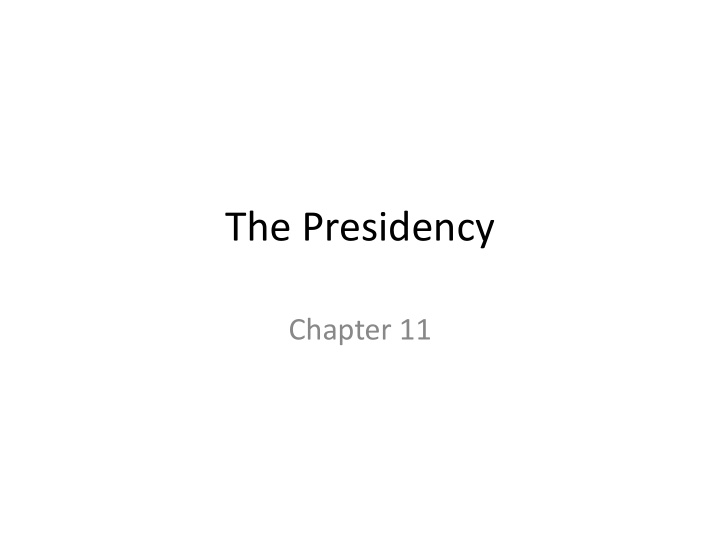



The Presidency Chapter 11
Electing the President • The presidential election cycle never really stops – “Permanent campaign” – By the time most people tune in, all the interesting stuff has already happened
• Timeline Nov 04 Nov 08 Pre-primary Primary General elections election “Soon” after Jan – July After Labor election of Day election year
• The game is straightforward: – Organize campaign – Establish self as credible contender – Raise funds – Become party’s nominee – Win general election
The Primary System • The parties use state-by-state elections to determine their nominees – Problems: • Low interest / turnout • Primary voters not representative of population • Possible bias in scheduling
• 1992 primary season – 10 Feb to 9 June • 44 contests in 4 months • 20 in 1 st month • 2008 primary season – 3 Jan to 3 June • 26 in 1 st month • 21 on 5 Feb!!
• Who cares? – States, parties, and candidates all have an interest in “front loading” the primary schedule. – Why?
• Electoral College – Each state receives (R + S) votes – 270 / 535 needed to win presidency – State by state plurality elections
The Presidency • Evolution from “chief clerk” to CEO – Original intent / “Whig theory” • Role of an “executive”? – Transition to “stewardship”
• Industrialization created a much more national politics – Great Depression (1929) resulted in huge expansion of national government into economy • Presidents tend to get too much credit/blame for economic conditions
Presidential “Roles” • Chief of State – Ceremonial role as head of the government • Throwing out first baseball, lighting Christmas tree, etc.
• Chief Executive – Executive power “vested” in the president by the Constitution – Executing laws often means turning legislative goals into actual programs • Ex: No Child Left Behind Act
– Appointment power • Approx. 8000 positions directly appointed by president – Ambassadors, federal judges, agency heads, etc. – Some require Senate confirmation, most do not
– Executive orders • Def: unilateral proclamation that changes gov’t policy – Ex: “Don’t Ask, Don’t Tell,” stem cell research • Can be overridden by act of Congress – Ex: No federal funding for abortion services
• Commander in Chief – President controls day to day operation of military • BUT, only Congress can declare war – They haven’t since 1941 – That’s why our troops haven’t been in combat since WWII
• Chief Diplomat – Only the president (Department of State) can conduct foreign diplomacy, execute treaties • Must be ratified by 2/3 Senate vote – President decides if US will recognize new countries or have official relationships with them • Ex: Taiwan, Iran, Cuba
• Chief Legislator – Modern presidents fully expected to have a legislative agenda • Makes recommendations to Congress • Works with Congress to develop legislation • Uses veto power to prevent undesired legislation
Recommend
More recommend